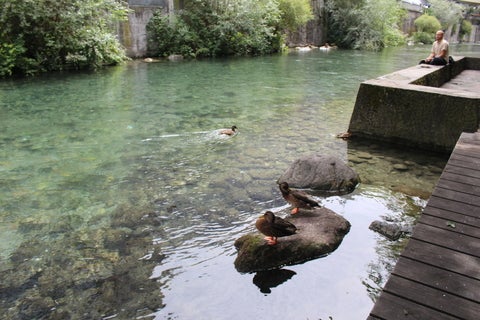
The following is the summary of the research proposal that was submitted to Social Sciences and Humanities Research Council of Canada (SSHRC) in October 2015:
Jordan’s already precarious water security is further vulnerable to climate change due to reduced precipitation and increased temperatures that decrease water runoff by 40 percent. The recent Syrian (and previous Iraqi and Palestinian) refugee crisis exacerbates this vulnerability. This research proposal investigates the potential of daylighting (or deculverting) urban streams to address these challenges.
Empirical studies abound on the ecological consequences of covering and uncovering urban streams such as, the hydrological effects (e.g. runoff and flooding) and geomorphological impacts (e.g. rise in temperatures and decreased fish habitat). Yet, there is a dearth in studies that address the links between urban stream daylighting and climate change adaptation and mitigation, and also, the enhancement of the public realm. Therefore, this research proposal draws on landscape ecology, urban morphology, and urban design theories to investigate the potential of urban stream daylighting at three interrelated levels:
- Offsetting water scarcity as a climate change adaptation response at the macro eco-system regeneration level;
- Improving public transit, cycling, and walkability to reduce greenhouse gas (GHG) emissions as a climate change mitigation measure at the meso urban morphological level; and
- Enhancing the public realm, raising awareness toward urban ecology, and involving local communities in the decision-making process as an approach to ameliorate the quality of life at the micro place-making level.
Specifically, this study investigates the following research questions: What are the current scope and nature of the urban stream daylighting practice? What lessons can be learned from this current practice to inform future ecological planning and design? How might the daylighting of urban streams and their ecological regeneration become catalysts for climate adaptation and mitigation? How do the covering and the daylighting of urban streams influence the meso-level urban morphology (e.g. transit and land use) and the micro-level public space design? And, how can vernacular architecture and contemporary local knowledge inform the practice of daylighting?
Through a rigorous review of the literature, this research project will build an on-line database that documents urban stream daylighting projects from across the globe so as to develop a better understanding of the scope and nature of daylighting and identify the criteria for best practices. Concurrently, a cross-national comparative case study research design will guide an in-depth study of two recent urban stream projects: the Seil in Amman, Jordan and the Cheonggyecheon in Seoul, South Korea. The remarkable similarities between the two streams include: their covering in the 1950s to prioritize urban infrastructure – a major street in Amman and an expressway in Seoul; their links to regional watersheds (the Zarqa River in Jordan and the Han River in Korea); their length and location extending for nearly eight kilometers at the core of the country’s capital; their strong historic associations with the surrounding urban fabric. Yet while Amman’s project completely covered the Seil and replaced it with a manufactured stream, Seoul’s project sought to ecologically regenerate the Cheoggyechoen and improve public transit. Through a qualitative and participatory methodology, this research project will involve students in the collection, management, and analysis of data including: Geographic information system (GIS) layering of historic and contemporary maps; visual topological analyses; content analysis of planning documents; and design charrettes with local planning experts and laypeople. The students will learn to deploy charrettes for: participatory design, data collection, and knowledge exchange.